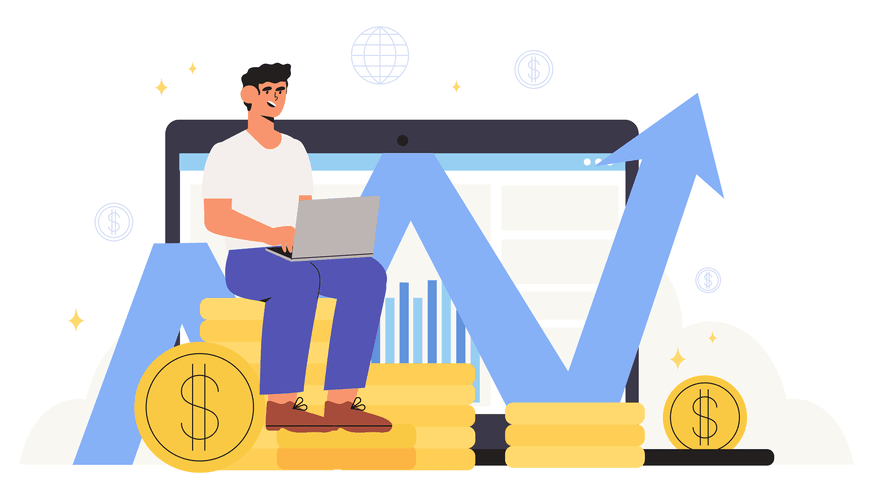
The what is invoice coding system extracts key information from the invoice, such as vendor details, invoice number, line items, and amounts. Once your system is set up, focus on successful implementation and ongoing improvement. Train your AP team thoroughly, emphasizing exception handling and correction procedures. Start with a pilot run using a subset of invoices, gradually increasing volume as you gain confidence.
Get smarter with our workflow resources

Accounts payable coding for supplier invoices requires using the company’s general ledger chart of accounts. Learn how Ramp’s accounts payable software can help you easily manage everything from invoice intake retained earnings balance sheet to coding to payment. Manual invoice coding comes with several challenges, especially as the business grows or invoice volumes increase.
- A smaller team can afford steep learning curves for mastering the use of sophisticated software, while a large team would require simple automation software.
- Coding invoices demands a detailed review, not just of the document itself but also of its broader context.
- Further, while addition of new GL codes is rare, accounting teams need to ensure that spreadsheets are updated in any such event.
- Invoice matching streamlines the AP process by ensuring that only accurate invoices are processed for payment, reducing delays and manual intervention.
- Non-PO or Non-purchase order invoices make up a significant portion of most AP departments’ workload.
No pre-funded accounts

Basware SmartCoding generates more consistent invoice coding and prevents mistakes by users in the process. Data quality for reporting purposes improves and advanced machine learning continuously improves the accuracy of coding proposals. Basware SmartCoding is a machine-learning-based solution supporting your users with the invoice coding of your non-PO invoices.

Vendor invoice
However, manual GL coding of invoices can be labor-intensive and prone to errors, especially when handling non-PO invoices. You can solve this by implementing AI-enabled automation for GL coding, transforming this traditionally cumbersome task into a streamlined, accurate, and efficient process. With Nanonets’ user-friendly interface, you can easily retrain your model, update GL codes, or modify approval workflows without IT intervention. This flexibility ensures your invoice coding automation remains efficient and aligned with your business processes over time. With Nanonets, you can set up direct connections to popular ERP and accounting systems like QuickBooks, Xero, and Salesforce. For other systems, you can use Nanonets’ API, the Zapier integration, or webhook features to push data automatically.

These codes, often called General Ledger (GL) codes, categorize expenses for accounting purposes. Think of it as giving each expense its own ‘address’ in your financial records. It provides complete visibility into every transaction, ensuring accurate and fast invoice coding and processing. Invoice coding is the process of adding information to an invoice using a system of unique codes. The codes connect the invoice items to the appropriate expenses in your company’s financial records.
- Invoice matching is the process of comparing an invoice with supporting documents—such as purchase orders and receipts—to ensure all details match before payment is processed.
- Each expense is categorized into one of these accounts, directly impacting how your financial statements – like your income statement and balance sheet – are presented.
- GL coding can be performed either manually or with the help of automation software, which automatically assigns GL codes to transactions based on previous assignments.
- Whether you’re expanding your operations or handling new invoice types, ExFlow adapts with you, providing the flexibility needed for evolving business needs.
- Modern accounts payable workflows are capable of invoice data capture, coding invoices with the right account and cost center, matching invoices and POs, and approving invoices.
Choosing the Right AP Automation Software
Invoice is the first step in the accounts payable process in which vendor invoices are received for payment. This is a critical point in the accounts payable process which sets the tone for the rest of the process. Although the accounts payable procedures seem straightforward, some inherent challenges prevent the team from optimizing its operations. Accounts payable managers often face Financial Forecasting For Startups the challenge of having to do more with fewer resources to transform their teams/departments from cost centers to profit centers. An efficient upstream process ensures that strong vendor relationships are maintained and mutually beneficial contracts are created.
- This article defines invoice coding for accounts payable (AP) and accounts receivable (AR) and explains how to code invoices for accounts payable.
- GL accounts identify revenue or expenditure categories, departments, and locations to compare with budgets and track revenue or business spending.
- Tipalti finance automation software uses artificial intelligence, including ChatGPT, for automatic general ledger account coding and OCR/machine learning for invoice and expense receipt data capture.
- For example, if your company buys a box of pencils, the invoice for stationery can be assigned with the general ledger (GL) code.
Many companies manually assign GL codes to invoices, which is a highly error-prone and time-consuming process. Implementing automation can reduce errors and save time on manual assignments, allowing accountants to focus on more critical tasks. Invoice coding is the practice of applying specific accounting codes to incoming invoices, allowing your team to properly categorize and track business expenses. This essential step in the accounts payable workflow ensures each transaction finds its proper place in the company’s chart of accounts. As AP teams grow and invoice volumes scale, these challenges compound, slowing down operations and increasing risk across the finance function. This is why more organizations are turning to automated invoice coding to improve accuracy, accelerate approvals, and build a more resilient accounts payable process.


